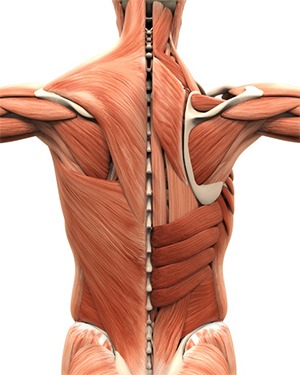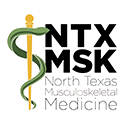Muscle composition
 Every time you move, your muscles contract and relax. This process only takes a few seconds, but it is actually a quite complex process. Even a simple smile is a result of muscle action. With over 600 muscles in your body working in conjunction, keeping your muscles functioning at their best helps your body move freely without restrictions.
Every time you move, your muscles contract and relax. This process only takes a few seconds, but it is actually a quite complex process. Even a simple smile is a result of muscle action. With over 600 muscles in your body working in conjunction, keeping your muscles functioning at their best helps your body move freely without restrictions.
Skeletal muscles are made up of hundreds or even thousands of muscle fibers called sarcomeres. These are bundled together and wrapped in a connective tissue covering called the epimysium. These bundles give muscles a striated appearance and are the mechanical parts of our body that create movement. Fascia, another connective tissue outside the individual bundles, surrounds and separates the muscles.
Muscles generally appear in antagonistic pairs working in opposition. When one contracts, the other lengthens. They are attached to bones by tendons, tough collagenous tissue much different in structure than muscles. When the muscles contract, movement is created in the attached skeletal structure.
Sliding Filament Theory
 Muscles contract when their string-like structures slide over each other. Each muscle bundle, sarcomere, is made of a single, elongated muscle cell. Each cell is composed of myofibril which are in turn made of myofilaments, which is where the action occurs.
Muscles contract when their string-like structures slide over each other. Each muscle bundle, sarcomere, is made of a single, elongated muscle cell. Each cell is composed of myofibril which are in turn made of myofilaments, which is where the action occurs.
Myofilaments are string-like structures set within a fluid that allows the fibers to move smoothly. This fluid is call sarcoplasm and is crucial to healthy muscle function.
The thick myofilaments contain contractile structures that repeat geometrically. These overlapping thick filaments are composed of myosin. During contraction, the myosin binds to the molecules of thin filament, actin, troponin, and tropomyosin, to cross over or under. The thick and thin filaments form “crossbridges,” making the sarcomeres shorter and thicker, contracting the muscle and moving the adjoining bone. Learn more about the Sliding Filament Theory from out favorites, the Amoeba Sisters!
How we make them work better: healthy function
Osteopathic Manipulative Treatment
Muscles function best when all parts are functioning as they are designed, free of restrictions and impingements. Often these abnormalities are subtle and go undetected. A physician specializing in osteopathic manipulation is able to detect these through palpitation, a hands on process to assess structural integrity of the musculoskeletal system.
Myofilaments which create the actual movement are set in sarcoplasm, a substance similar to cytoplasm in other cells. This jelly-like substance surrounds the nucleus of cells. In muscles, this sarcoplasm contains large amounts of glycogen, the storage form of carbohydrates that supplies energy. It also contains calcium ions that help to trigger muscle contraction.
The viscosity, or thickness, of sarcoplasm is a key reason why muscle warm-up is important. As the fluid becomes less dense with warmth, filaments glide with less resistance. Movement becomes more free. However, sarcoplasm is designed to protect the muscle fibers, so when the jelly substance becomes too thin, friction results and microtears occur.
Optimal muscle function requires normal nerve function and fluids that circulate freely. The body's primary fluid systems include blood, lymph, cerebrospinal systems. These fluids are what carry oxygen, nutrition, enzymes, and hormones to all the cells of your body. Any kind of blockage of the nerves or fluids will result in pain and disease over time.
Free flow of fluids to the muscles and to all tissue in the body provides a necessary supply of nutrients and removal of wastes. Adequate hydration helps to ensure the normal flow of fluids and is imperative for all body functions. Impingements in musculoskeletal tissue, including connective tissue or fascia, can restrict this natural flow, causing impairment in body functions.
Constrictions in musculoskeletal tissue also create restriction in movement, preventing the muscles from working in a full range of motion and at optimal function. Other structural areas step in to compensate. The musculoskeletal system no longer functions as it is designed, causing secondary conditions. Removal of structural blockages keeps muscles functioning at their peak. Osteopathic Manipulative Medicine is designed to remove structural constrictions.

Connective tissue can also be a factor in poor muscle performance. Tendons and other collagenous tissue is slow healing, often resulting in formation of scar tissue that inhibits smooth musculoskeletal contraction and relaxation. During healthy repair, cells regenerate with necrotic cells being replaced by new cells, the body’s natural process of regeneration. Muscles are more adept at this due to a healthy blood supply. Collagenous tissue, as in tendons, ligaments and cartilage, has poor blood supply, making healing slow and often incomplete due to the subsequent lack of necessary growth factors, nutrients and proteins. Injured tissue is partially replaced by scar tissue rather than healthy regeneration of cells.
Regenerative Orthopedics
Regenerative Orthopedics is a new and promising approach to healing musculoskeletal injuries without medications or surgery. It effectively bridges the gap between these two traditional treatment methods.
Orthopedic injuries can be debilitating, and many who seek treatment frequently end up getting surgery. The vast majority of musculoskeletal injuries, however, can be treated non-surgically. Many physicians now focus on re-growing tissue as the new standard of care. Regenerative Orthopedics uses your own blood cells or bone marrow to target their healing substances into damaged tissue. They work by stimulating and enhancing the body’s natural repair system, signaling needed cells to the site of an injury.
The body naturally repairs and regenerates millions of cells each minute. When the body becomes overwhelmed due to chronic or severe conditions, Orthobiologic Therapy can provide healing cells to damaged tissue, replacing cells that have been depleted. This additional supply of healing cells allows for accelerated and more complete healing.
Regardless of your level of musculoskeletal fitness, we all want to live healthier and happier. No athlete wants their performance inhibited by structural defect. No one wants pain and stiffness that interferes with daily life. We do not have to.

